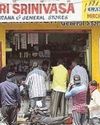
The upcoming visit of US President Donald Trump to India may see the contours of the Indo-US deal being finalised in specific sectors, which is also likely to include allowing for market access for US dairy products in India. This move is likely to have significant adverse consequences on the prospects of the fledgling Indian dairy industry. Let’s first set a brief context by highlighting the importance of the dairy sector in India’s overall economic schema.
The dairy sector not only provides employment to the rural workforce, but is also a significant contributor to the national economy. While the share of agriculture and allied (A&A) sector in the gross value added (GVA) has consistently declined from 18.2 per cent in 2014 to 17.2 per cent in 2017, the share of livestock to GVA has increased from 4.4 per cent to 4.9 per cent during the same period. Importantly, within the A&A sector, among the key livestock products, milk and milk products have the highest share, at around 67.2 per cent in 2017.
The dairy sector plays a pivotal role in aiding the reduction of rural poverty and inequity, in addition to ensuring the food security of millions of rural households. Notably, according to a report by the Agriculture Skill Council of India, while crop production generates employment for the rural workforce for an average of 90-120 days in a year; the dairy sector plays a major role in providing alternative employment opportunities throughout the year.
In fact, in the recent years, milk and milk products have become the largest agricultural commodity, with their output standing at more than 20.6 per cent of the combined output of paddy, wheat and pulses. Thus, there is no gainsaying the importance of the dairy sector as one of the important sectors of the Indian economy.
この記事は The Hindu Business Line の February 18, 2020 版に掲載されています。
7 日間の Magzter GOLD 無料トライアルを開始して、何千もの厳選されたプレミアム ストーリー、9,000 以上の雑誌や新聞にアクセスしてください。
すでに購読者です ? サインイン
この記事は The Hindu Business Line の February 18, 2020 版に掲載されています。
7 日間の Magzter GOLD 無料トライアルを開始して、何千もの厳選されたプレミアム ストーリー、9,000 以上の雑誌や新聞にアクセスしてください。
すでに購読者です? サインイン

Covid Presents An Opportunity For India
India must attract investors exiting China post-Covid. Streamlining of project clearances and relaxation in FRBM norms will help

Did Alternative Assets Shield You From Covid-19 Volatility?
The assets closely linked to stock and debt markets could not stave off the losses

How To Put Aircraft To Bed
Preserving grounded planes, to get them up and flying at short notice, is a challenging task. Ashwini Phadnis captures the process

There Can Be No Going Back On WFH
Covid-19 has fast-forwarded the shift to ‘work from home’. However, some face-to-face connect will always be needed

UN, WHO Urged To Ensure ‘Benefit Sharing' Of Covid-Related Data
Biopharma firms should reach vaccines, medicines to poor nations at an affordable price, say civil society bodies

With No Clear Signal From Rlys, States Explore Ways To Bring Back Migrants
Quarantine centres, cross-country buses being arranged even as migrants hop on to boats, trucks and ambulances

Centre Allows All Neighbourhood Shops To Open But With Riders
Final call will be taken by local authorities; shopping complexes that draw fewer ‘outsiders’ are permitted to operate

Covid Impact Relatively Muted In India
Compared to Italy and the US, India’s rate of infection spread has been slow. This can be attributed to the strict measures in place

How Global Trade Will Fare Post-Covid
China isn’t likely to lose its pre-eminent position soon. India, for one, will need to make manufacturing globally competitive

How To Curb Harassment In The Virtual Office
Training and sensitisation are essential. Institute a strict dress code and chat etiquette to ensure professionalism during video calls